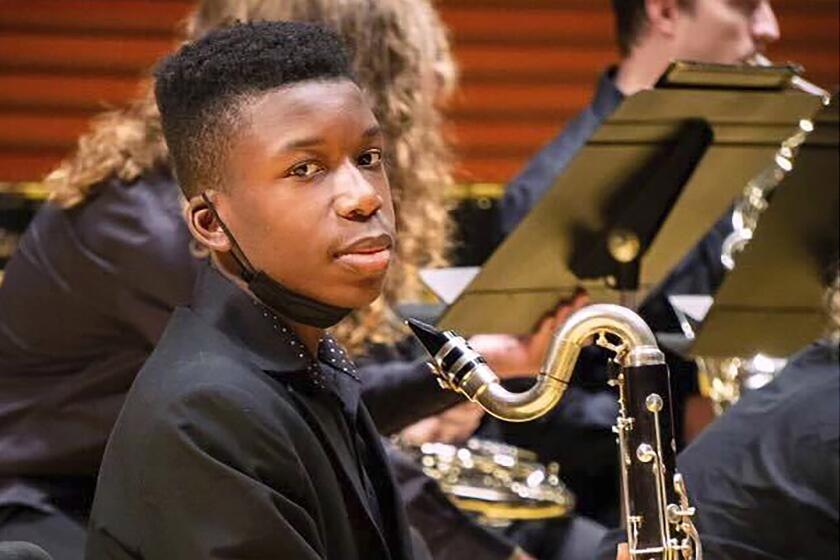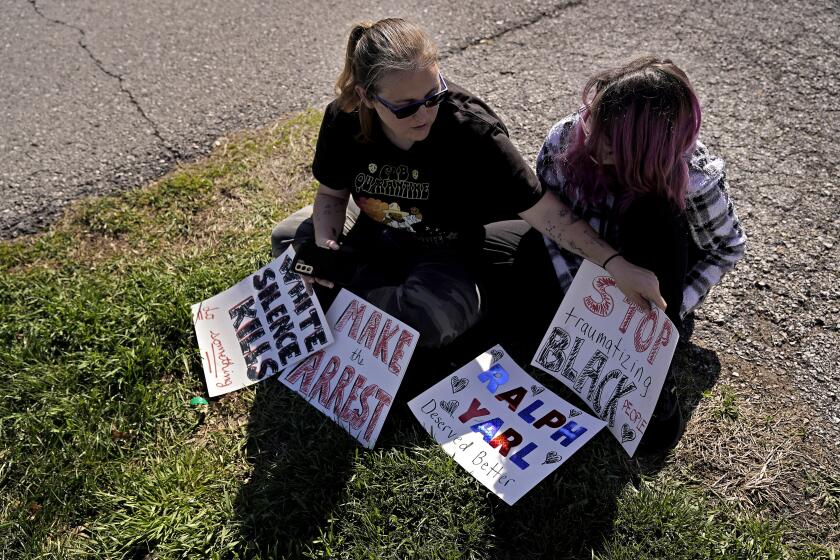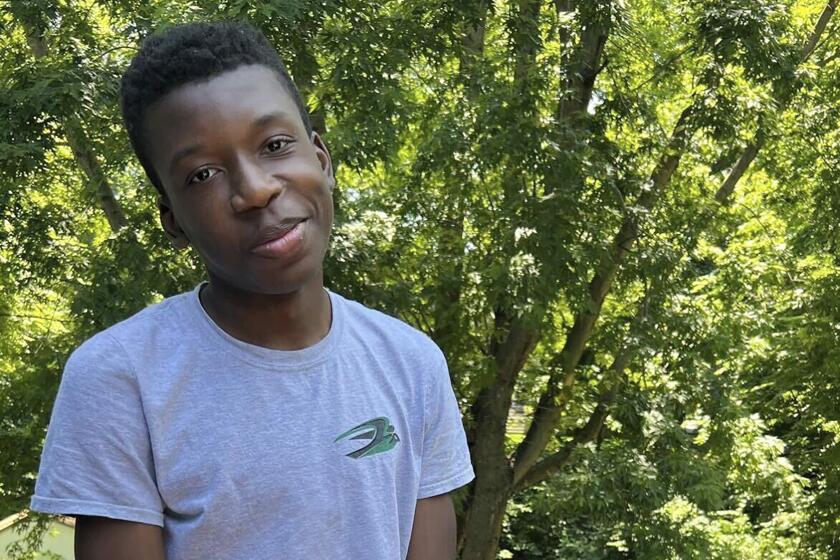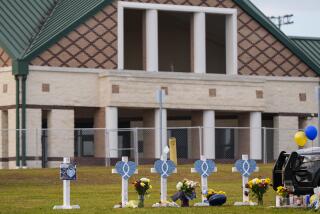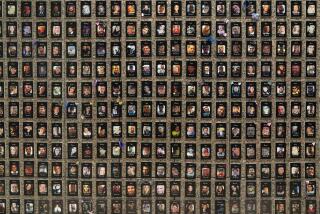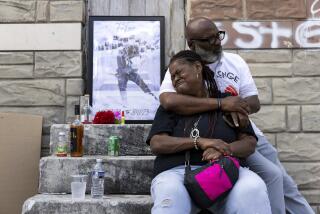For this Black mom, Ralph Yarl could have been her son
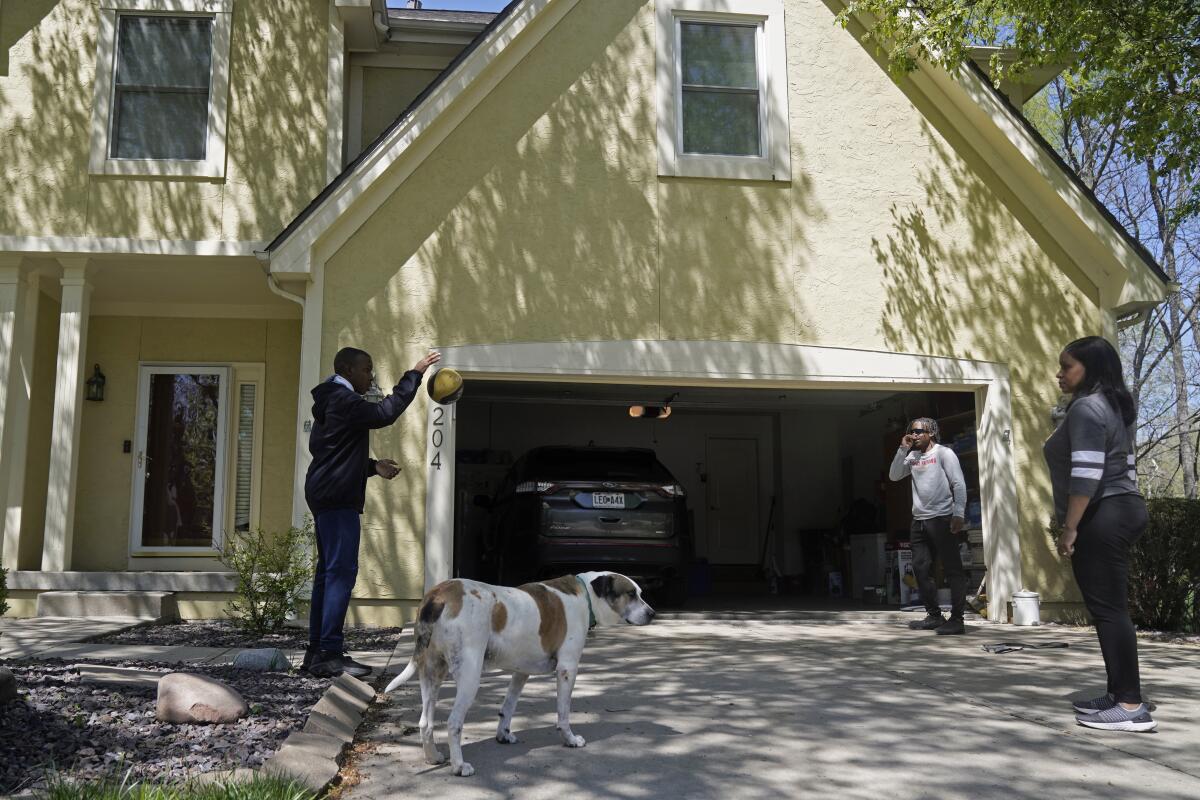
- Share via
KANSAS CITY, Mo. — On April 13, the nightmare that I’d worried about ever since we moved into our neighborhood came true.
That was the day that I learned 16-year-old Ralph Yarl was shot after mistakenly ringing a doorbell at the wrong house while trying to pick up his younger brothers from a play date. And even as I anguished over what happened to him, one thing kept echoing in my mind: It could have been my child.
John, my older son, is 17 and attends the same high school as Ralph did. It’s common for me to ask John to pick up his 14-year-old brother, Jaden, from various extracurricular activities. I’ve been cautious about what I ask John to do and where I ask him to go. I don’t know what might happen if he crosses paths with someone who feels threatened by the color of his skin.
That’s because the suburbs of Kansas City north of the Missouri River have long held a reputation of not being the most welcoming to Black families. While I’ve adjusted to the awkward stares and subtle racism, I’ve always had a nagging fear that something bad could happen if my sons ventured too far from home without me.
I became painfully aware that John shared that fear shortly after Ahmaud Arbery was gunned down by white men while jogging through a Georgia neighborhood in 2020. Like Arbery, John liked to jog through the neighborhood. Now, however, he was asking me to trail him in my car as he jogged through ours.
The shootings of four young people after simple, everyday mistakes have shone a spotlight on the proliferation of ‘stand your ground’ laws in the U.S.
I felt like I’d failed as a mother. I had done everything I could to make him feel safe and protected, but he was afraid to run past the familiar, well-manicured lawns in the only neighborhood he’s ever known as home.
I knew there would be challenges when we moved in as one of the only Black families in the subdivision in 2005. But I figured the benefits would outweigh the drawbacks. Besides, you can’t run or hide from racism.
My ex-husband and I bought our home when John was just 6 weeks old — three years before Staley High School opened — because we wanted our children to receive a quality education. Our real estate agent touted plans for the state-of-the-art high school campus as a selling point. We loved the layout of the home on a half-acre of land, and the sprawling backyard was perfect for the Irish setter we had at the time.
Some neighbors welcomed us with housewarming gifts of flowers and baked goods. Later, we were told that one family sold their house shortly after we moved in because they didn’t want to live near Black people. At a party at a neighbor’s house not long after that, a guest wondered out loud why Black people would want to live in a predominantly white neighborhood. “Wouldn’t they feel more comfortable living around their own people?”
Andrew Lester, 84, surrendered a day after being charged with first-degree assault and armed criminal action in the shooting of Ralph Yarl.
Then there was the time I sent my then-husband to return a casserole dish a neighbor had left at my house after a party. The former neighbor, whom we’d known for years at that point, opened the door and yelled, “We don’t want any. Go away,” and slammed the door. She didn’t take the time to make out the face on the other side of the door. She just saw Black. She apologized profusely when she realized what she had done.
It touched John from very early on, too. He was in kindergarten when I had to confront some of the realities of raising a Black child in this predominantly white suburb. Silly me. I thought I’d have more time to prepare.
We were home one evening when I overheard John yell at the TV during a game of Wii boxing. “Take that, you jigaboo!” He could tell by my face that the word was more than a casual insult aimed at his virtual opponent. It took a while for me to coax out of him that a white kid at school had called him that name.
How do you explain to a 5-year-old why someone would call him that? I fumbled through it just as I’ve learned to fumble through raising my Black sons in an environment where their skin is considered by some to be a weapon.
These things happen. You block them out and you move on, but the subtle tension remains. No one wants to talk about it. Eventually you become numb. You avoid certain situations. It’s like walking on eggshells to avoid a land mine.
Andrew Lester, the 84-year-old white man who shot Ralph Yarl, a Black teenager in Kansas City, pleaded not guilty in his first court appearance.
It becomes exhausting to try to shield my sons from the ugliness I know exists. John is dating now. If he plans to ask a white girl out, I always ask: “Do her parents know you are Black? Are they OK with it?”
When I heard what happened to Ralph, I cried. I haven’t slept well since, because it could have easily been John who was shot in the head after mistakenly going to NE 115th Street instead of NE 115th Terrace to pick up his brothers.
Ralph’s mistake was an innocent one. In my neighborhood, address mix-ups happen all the time. Many houses are numbered identically, and sometimes the only difference in a street address is “terrace” versus “street” or “northwest” versus “northeast.”
We recently had a string of unexpected visits. Just after dawn one morning, we were awakened to men we didn’t hire inspecting tree damage in our backyard after a storm. A few days later, workers for a lawn-care company let themselves into our backyard to treat it for grubs.
The most troubling incident came when a man we didn’t know rang our doorbell in the middle of the day.
A Missouri “stand your ground” law may come into play in the shooting of Ralph Yarl, a Black 16-year-old who mistakenly went to the wrong Kansas City home.
My husband and I, both working from home, couldn’t answer right away. By the time we got to the door, the man was in our backyard and fumbling around our back door. When my husband confronted him, he told us he was a contractor sent to measure our door for a replacement. We hadn’t ordered a door.
So it’s easy for me to see how mistakes happen. But it never occurred to me to grab my firearm and shoot these unexpected visitors. That simply isn’t the first option in the world that I’m working so hard to create for my family.
Since Ralph’s shooting, I’ve had a lot of friends check on us. My best friend, who lives in St. Louis, pointed out that Ralph looks a lot like Jaden, my younger son. I’d noticed the resemblance, too. I cried again.
I don’t regret moving here. My sons have outstanding teachers and coaches. They’ve excelled academically and developed valuable friendships with a diverse group of young people. I’ve met some of my closest friends in this neighborhood.
A 20-year-old woman on her way to a friend’s house in upstate New York was driven to the wrong address and was quickly shot to death by the homeowner.
Yet as a Black woman in America, I rise each day knowing that I will invariably face small indignities tossed my way by white people who mistakenly believe they’re entitled to dismiss me because of my race.
I haven’t been called the “N-word,” nor have I been physically accosted. Racism in this part of the city is far more subtle, and if you’re not acutely aware of what to look for, it blows right past you.
I won’t say I’m used to misguided attempts to marginalize my presence, because I won’t accept being treated like I’m less than anyone else. But when it happens, I’m rarely surprised.
And I’ll also admit: It’s tiring for my family to have to go out of its way to make white people feel comfortable with our Blackness. We can’t peel off our skin; not that we would if we could. Everyone wants to proclaim, “I don’t see color,” when, in fact, that’s the first thing that they see when they see my sons. It’s hard to miss the only Black kid on the baseball diamond.
But on the playing field, at least, my boys generally get the benefit of the doubt that Ralph Yarl wasn’t given on that fateful night earlier this month.
Longtime Associated Press journalist Kia Breaux is currently Midwest regional sales director for the AP, based in Kansas City.
More to Read
Sign up for Essential California
The most important California stories and recommendations in your inbox every morning.
You may occasionally receive promotional content from the Los Angeles Times.
